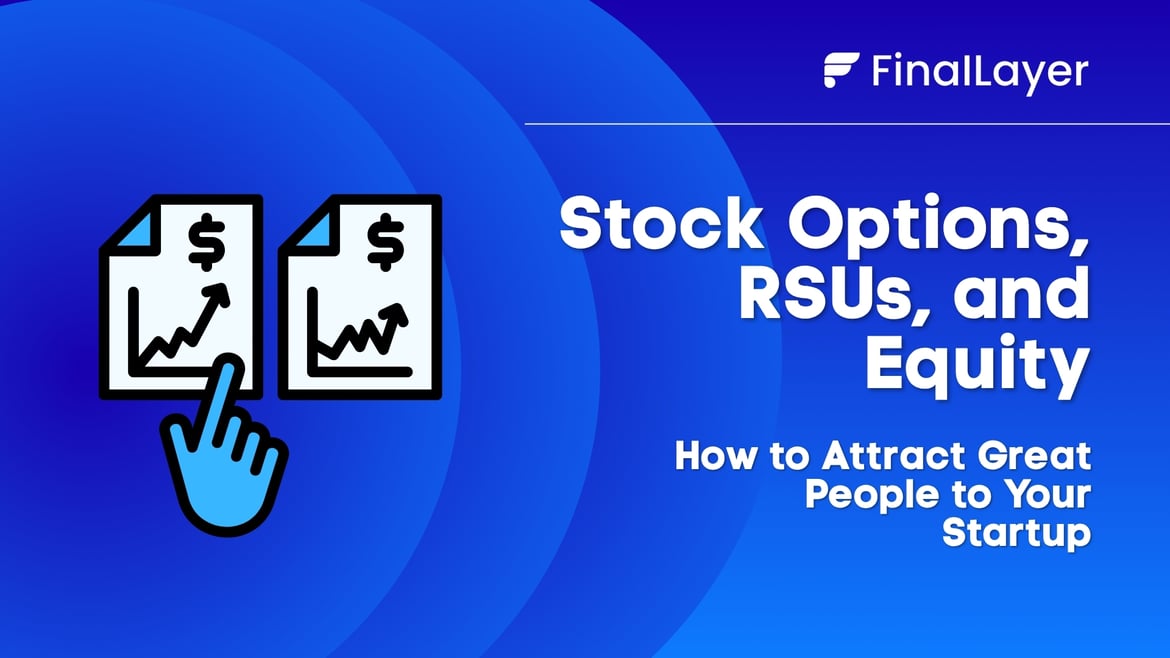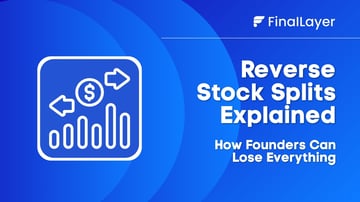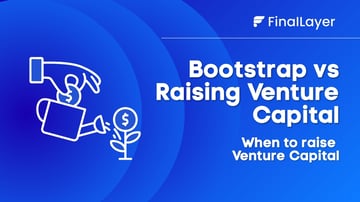To attract great people to come work with you in your startup, you need to have an attractive stock options and equity compensation policy that makes joining your risky venture more appealing than stable corporate jobs. Compensation packages for early team members often make or break your ability to recruit top talent, especially when competing against established companies with higher salaries and better benefits. Understanding how to structure stock options, when to use RSUs versus stock options, and how much equity to allocate to your team separates founders who build strong teams from those who struggle to recruit or retain great people. The equity compensation decisions you make in your first year have consequences lasting years or decades, creating either cultures where people think like owners or mercenary environments where employees leave for the next opportunity. Getting your stock options and equity structure right from the beginning is one of the most important foundational decisions you'll make as a founder.
The Foundation: Best Practices vs Hard Rules
Now there are no set rules about this, but there are definitely best practices. Every startup's situation is unique based on stage, funding, industry, and the specific roles you're hiring for. What works for a well-funded enterprise SaaS company might not work for a bootstrapped consumer app.
But certain patterns have emerged over decades of startup experience that tend to work well across different contexts. Understanding these best practices helps you design an equity compensation structure that attracts talent while protecting your cap table for future rounds.
Stock Options vs RSUs: Making the Choice
In the earliest of days, whether you want to do stock options or whether you want to do restricted stock units is a choice. This decision matters more than most founders realize because it affects both the tax treatment for your team and the psychological ownership they feel.
Why We Chose RSUs for Our Founding Team
In our case, we've actually gone with RSUs for our earliest team members, the founding team and the very early team right now. Down the road as we do more hiring, we will likely have stock options for later employees.
The biggest difference is really the cost basis and we wanted a founding team to have the same cost basis as the founders. When you use RSUs for your earliest team members, they're essentially being treated like founders from an equity perspective. They don't have to pay anything to exercise their shares, just like founders don't pay for their initial equity.
This creates a sense of true ownership and partnership that's harder to achieve with stock options, which require employees to pay an exercise price to actually own their shares. For people joining when the company is worth almost nothing, having the same cost basis as founders is a meaningful psychological and financial advantage.
When to Transition to Stock Options
As companies grow and hire beyond the founding team, stock options become more standard for several reasons. The company has a meaningful valuation, so the cost basis matters less. The tax treatment becomes more predictable and easier to administer at scale. And stock options are what most employees expect to see in their compensation packages.
Vesting Schedules: The Standard Structure
Having a vesting schedule is still pretty typical, regardless of whether you use RSUs or stock options. Usually it's a four-year vesting schedule with a one-year cliff.
What it means is nothing vests for the first one year and then 25% of it will vest at the end of one year. After that, there will be monthly vesting for the next three years. This structure has become so standard that deviating from it can actually raise questions from investors and potential hires.
Why the One-Year Cliff Exists
The one-year cliff protects the company from people who join, don't work out, and leave within the first year while still walking away with equity. If someone leaves at month 11, they get nothing. If they leave at month 13, they get 25% of their grant plus the additional month. This creates a meaningful commitment threshold.
From the employee perspective, it can feel harsh, but it's universally standard enough that most people accept it as normal. And for people who do stay beyond a year, the monthly vesting after that means they're constantly earning more equity, which helps with retention.
Founder Vesting: Not Just for Team Members
In our case, the founders and the team are all on the same type of vesting schedule. This might surprise some people who assume founders should own their equity outright from day one.
Now this is pretty common in venture backed companies because the VCs are also looking to make sure that the founders are also on a vesting schedule and that we're not going anywhere and that you're invested in the long-term success of the company.
VCs have learned from painful experience that when founders aren't on vesting schedules, bad things can happen. A founder can leave after six months but still own 30% of the company. A co-founder can be forced out but retain massive equity. These situations create unfundable cap tables and destroy companies.
By putting everyone on the same vesting schedule - founders and team alike - you create alignment around long-term commitment and avoid cap table problems down the road. This becomes especially important when you're pitching to angel investors or raising from VCs who will scrutinize your cap table carefully.
The Big Question: How Much Equity Should You Give?
And then there's the question of how much equity should you give your early team. This is very, very subjective and it varies a lot based on stage, role, and individual circumstances.
There are some benchmarks in terms of how much you want to give your first engineering hire, first design hire and so on and so forth. You'll see ranges like 0.5-2% for employee #5-10, or 0.1-0.5% for employee #50-100. These benchmarks can be useful starting points but shouldn't be followed religiously.
The Case for Extreme Generosity
I like to approach this in an extremely generous fashion where 25% of the equity is owned by the team in our case and we intentionally designed it that way. This is significantly more generous than the typical 10-15% employee option pools you see in most startups.
Why did we do this? Because we've seen firsthand how ownership drives behavior and commitment. When people own meaningful equity, they think like owners. When they own token amounts, they think like employees.
The Troubling Trend Toward Stinginess
In the last decade or so, I've observed that both investors and founders have become a little stingier with equity. The typical employee option pool has shrunk from 15-20% to 10% or even less. Individual grants have gotten smaller as companies have gotten more expensive to build and require more employees.
Even the stock option pools that investors are setting up are not more than like 10%. When you combine this with multiple funding rounds that dilute the pool, individual team members end up with equity amounts so small they're almost meaningless.
I typically do not recommend this approach because I love the fact that our early team has so much ownership and they have a vested interest in the company succeeding. When someone owns 2-3% of your company rather than 0.2%, the difference in their commitment and behavior is dramatic.
Why Generous Equity Actually Works
It is very important for the early team to behave like it's their company and they're trying to deliver against personal interest rather than just a job. If you want that, be very generous with your equity and it'll be worth it.
Think about the difference in behavior between someone who owns 0.1% and someone who owns 2%. At a $100M exit, the first person makes $100K before taxes. The second makes $2M. The first person has a nice bonus. The second person has life-changing money. Which one do you think will work weekends, fight for the company's success, and stay through difficult times?
The Math Works Out Better Than You Think
Founders often worry that giving away too much equity means they won't make enough money if the company succeeds. But this math is backwards. A founder who owns 30% of a $500M company makes far more than a founder who owns 60% of a company that dies because the team wasn't motivated enough to make it succeed.
Generous equity helps you recruit better people, keeps them longer, and makes them fight harder for success. All of these factors dramatically increase your probability of reaching a meaningful outcome. The dilution is worth it.
Practical Guidelines for Setting Up Your Equity Structure
Here's what I recommend based on our experience and observing many other startups:
For founding team members (employees #1-5): Use RSUs to give them a founder-like cost basis. Grant 1-5% depending on role and timing. Put them on the same four-year vest with one-year cliff as founders.
For early team members (employees #6-20): Transition to stock options. Grant 0.5-2% depending on role and seniority. Maintain the standard vesting schedule.
Overall pool allocation: Reserve 20-25% of equity for the team rather than the standard 10-15%. Yes, this means more founder dilution, but it also means a much higher probability of success.
Vesting for everyone: Four years with one-year cliff, including founders. This protects the company and creates aligned incentives.
Communicating Equity to Candidates
When recruiting, be transparent about the equity you're offering and put it in context. Help candidates understand what their percentage could be worth at various exit scenarios. Explain your vesting schedule and why it's structured that way. Show them that you're being generous compared to market standards.
Most importantly, make it clear that you're giving them meaningful equity because you want them to behave like owners, not employees. This frames the equity as a partnership opportunity rather than just compensation.
Having strong personal branding and thought leadership helps attract better talent who are excited about joining your mission, not just the equity compensation.
The Long-Term Impact
The equity decisions you make in the first year of your company have consequences that last for years or even decades. Generous equity structures create cultures where people think long-term and fight for the company's success. Stingy equity structures create mercenary cultures where people leave for the next opportunity.
At FinalLayer, we've intentionally designed our equity structure to be generous because we've seen firsthand how ownership drives commitment. Our early team has meaningful equity that could be life-changing if we succeed, and you can see it in how they approach their work.
If you're thinking through equity structures and compensation for your early team, join our founder's Slack community where we discuss these decisions with other founders in the Founder Resources tab who are navigating the same challenges around stock options, RSUs, and team equity.

















